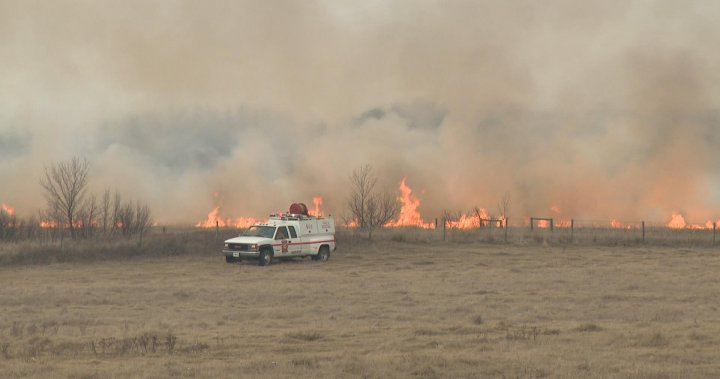A controlled burn that was intended for land management purposes in Saskatoon, Canada, ended up getting out of control, leading to the intervention of the Saskatoon Fire Department. The incident occurred on a Tuesday and required the fire department to take action to extinguish the blaze. This unexpected turn of events serves as a reminder of the risks associated with controlled burns and the importance of proper precautions and monitoring to prevent such incidents from occurring.
Controlled burns are a common practice used for land management purposes, including reducing fuel buildup, controlling weeds and pests, and promoting the growth of certain plant species. However, despite their benefits, controlled burns carry inherent risks, as demonstrated by the incident in Saskatoon. Factors such as weather conditions, fuel availability, and human error can all contribute to a controlled burn getting out of control. It is essential for those conducting controlled burns to carefully assess these factors and take necessary precautions to minimize the risk of a fire getting out of hand.
When a controlled burn does escalate into an uncontrolled blaze, it falls upon the local fire department to respond and contain the fire. In the case of the Saskatoon Fire Department, they were tasked with battling the out-of-control fire and preventing it from spreading further. Firefighters are trained to handle a variety of firefighting situations, including wildfires, and are equipped with the necessary tools and resources to combat such incidents. Their timely response and coordinated efforts are crucial in ensuring the safety of nearby residents and wildlife, as well as protecting property and natural resources.
In the aftermath of the incident, there may be investigations into what caused the controlled burn to get out of control and whether proper protocols were followed. It is important for those responsible for conducting controlled burns to learn from any mistakes that were made and implement changes to prevent similar incidents in the future. This may involve reviewing and updating safety protocols, providing additional training for personnel involved in controlled burns, and improving communication and coordination with local fire departments.
As communities continue to grapple with the effects of climate change, the risk of wildfires and other fire-related incidents is on the rise. It is crucial for individuals and organizations that engage in controlled burns to be mindful of the potential risks and to prioritize safety in their land management practices. This includes closely monitoring weather conditions, maintaining clear communication channels with local fire departments, and having contingency plans in place in case a controlled burn does get out of control. By taking these proactive measures, the likelihood of a controlled burn escalating into a dangerous wildfire can be significantly reduced.
Overall, the incident in Saskatoon serves as a cautionary tale of the risks associated with controlled burns and the importance of proper planning and oversight. While controlled burns can be an effective tool for managing land and promoting ecosystem health, they must be conducted with care and vigilance to prevent accidents and ensure the safety of all involved. By learning from past mistakes and implementing best practices, communities can continue to benefit from controlled burns while minimizing the potential for harm and destruction.


